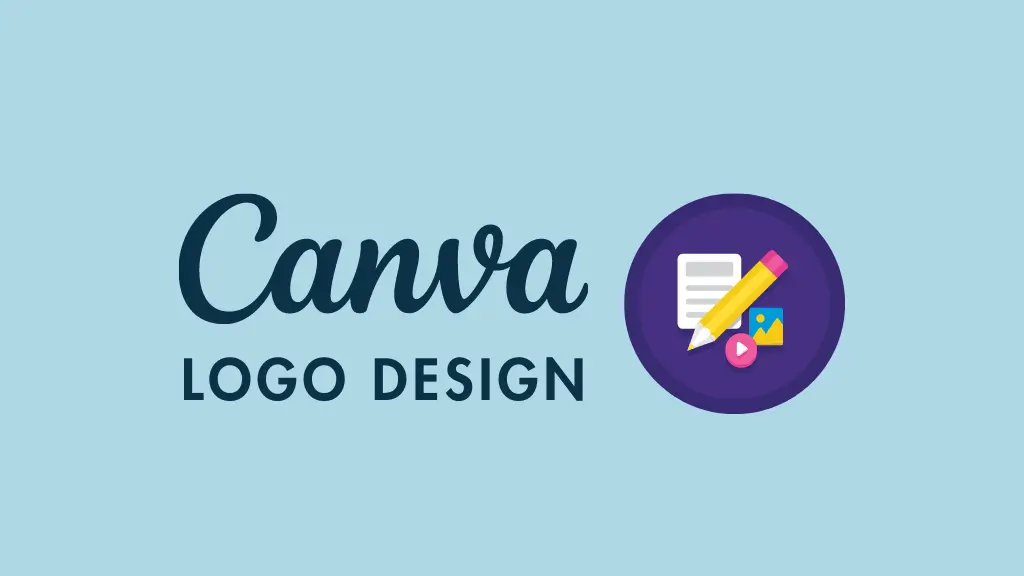
Introduction:
A logo is the visual identity of a brand, representing its core values, mission, and personality. Whether you’re designing for a business, personal brand, or online presence, a well-crafted logo sets the foundation for effective branding. In the world of graphic design, simplicity is key—a clean, memorable, and versatile logo ensures long-term success.
While professional tools like Adobe Illustrator and CorelDRAW are industry standards, they come with a learning curve. Canva, on the other hand, is a user-friendly, web-based tool that allows both beginners and experienced designers to create stunning logos without the need for advanced software skills.
In this guide, we’ll explore the graphic design principles of simple logo design and how to apply them using Canva. Whether you’re a beginner or an aspiring graphic designer, this step-by-step tutorial will help you create a professional, simple, and effective logo in Canva.
The Importance of Simple Logo Design in Graphic Design:
In graphic design, simplicity is a golden rule. Some of the most iconic logos—such as Apple, Nike, and McDonald’s—are based on minimalist principles. Why does simplicity matter in logo design?
Memorability: A minimalist logo is more memorable and effortless to recognize. When a logo has too many elements, the audience may find it difficult to process the brand’s identity at a glance.
Versatility: A well-designed logo should work across different platforms—websites, business cards, billboards, and merchandise. Simplicity ensures that the logo maintains clarity at any size.
Timelessness: Trendy logos may look appealing today but can quickly become outdated. A simple logo remains relevant for decades without requiring frequent redesigns.
Scalability: Complex logos with too many details lose clarity when resized. Simple logos, on the other hand, remain sharp and effective across all applications.
Step-by-Step Guide to Designing a Simple Logo in Canva:
Now that we understand the importance of simplicity, let’s dive into the step-by-step process of creating a simple yet professional logo using Canva.
Step 1: Sign Up and Log In:
Visit Canva’s website and create a free account. If you’ve registered an account, sign in now. Canva is available both as a web application and mobile app, making it accessible from anywhere.
Step 2: Create a New Logo Project:
Click on “Create a Design.”
Type “Logo” in the search bar.
Select a Blank Canvas (recommended for originality) or browse through pre-made logo templates for inspiration.
Canva automatically sets the default logo size at 500 x 500 pixels, but you can customize this based on your needs.
Step 3: Understanding Logo Design Principles in Canva:
Before jumping into design, let’s review the core principles of logo design and how they can be applied in Canva:
1. Shape & Layout:
The shape of your logo should be balanced and visually appealing.
Common logo structures include wordmarks (text-based), lettermarks (monograms), pictorial logos (icons), and abstract logos.
Canva provides grid and alignment tools to ensure symmetry and proper spacing.
2. Typography:
Typography plays a crucial role in branding. Canva offers a variety of free and premium fonts, but choosing the right one is essential:
Sans-serif fonts (e.g., Montserrat, Poppins) → Modern, clean, and minimal.
Serif fonts (e.g., Playfair Display, Merriweather) → Classic, elegant, and professional.
Handwritten fonts (e.g., Pacifico, Dancing Script) → Friendly and personal.
3. Color Psychology:
Colors evoke emotions and influence how a brand is perceived. Canva allows users to select colors using the HEX code tool for precision.
Blue → Trust, professionalism (Tech, Finance).
Red → Energy, passion (Food, Entertainment).
Green → Growth, nature (Eco-friendly brands).
Black & White → Sophisticated, timeless (Luxury brands).
4. Icons & Symbols:
Icons add visual interest to a logo. In Canva:
Click on “Elements” → Search for relevant icons related to your brand.
Use simple, vector-based icons to maintain clarity.
Resize and align the icon to complement the typography.
Step 4: Designing Your Simple Logo in Canva:
Now, let’s apply these design principles to create your logo.
1. Choose a Color Palette:
Click on Background and choose a solid color (or leave it transparent).
Select Text → Click on the color wheel to choose a brand-specific color.
2. Add and Customize Typography:
Click on Text → Select “Add a heading” → Type your brand name.
Experiment with different font pairings (e.g., bold + thin fonts).
3. Incorporate an Icon:
Go to Elements → Search for a symbol related to your business.
Resize and position it to maintain balance and proportion.
4. Adjust Alignment and Spacing:
Use Canva’s alignment grid to position elements symmetrically.
Adjust letter spacing for a sleek and professional touch.
Step 5: Exporting and Downloading Your Logo:
Once you’re satisfied with your design:
Click “Share” → Select “Download”.
Choose the best format for your needs:
PNG (Transparent Background) – Best for digital use (requires Canva Pro).
JPEG – Good for web use but lacks transparency.
SVG – Scalable without losing quality (Canva Pro feature).
Best Practices for Simple Logo Design in Graphic Design
Stick to Minimalism: Avoid clutter—less is more in logo design.
Ensure Versatility: Your logo should look great on social media, business cards, and websites.
Check for Scalability: A good logo should remain clear whether displayed on a small app icon or a billboard.
Make It Unique: Customize icons and fonts to avoid generic, overused designs.
Common Mistakes to Avoid in Logo Design
Using Too Many Fonts – Use one or two fonts that complement each other.
Complicated Designs – A logo should be simple and clear at first glance.
Ignoring Contrast – Ensure readability, especially for text-based logos.
Not Checking Copyrights – Avoid using stock icons that may be overused.
Conclusion:
A simple logo is powerful, memorable, and timeless. With Canva, even beginners can create stunning, professional logos by applying basic graphic design principles. By focusing on color psychology, typography, shapes, and minimalism, you can craft a versatile, impactful logo for any brand. Whether you’re a freelancer, entrepreneur, or small business owner, Canva provides the perfect tools to bring your vision to life.
